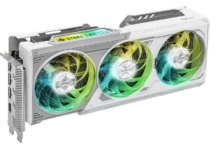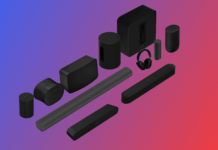When we first saw that Futuremark had announced 3DMark03 on their site we of course were very interested. The screenshots up there sure look nice but we wanted to get a bit more in depth with this new benchmark so we contacted Nicklas Renqvist at Futuremark to see if he would like to answers some of our questions…
When we first saw that Futuremark had announced 3DMark03 on their site we of course were very interested. The screenshots up there sure look nice but we wanted to get a bit more in depth with this new benchmark so we contacted Nicklas Renqvist at Futuremark to see if he would like to answers some of our questions.
[NH]: What are the minimum requirements to run 3DMark®03 and what would you “recommend”?
[FM]: As 3DMark®03 is a benchmark and not a game, it has no real minimum “requirements”. The minimum recommendations when it comes to the CPU and graphics card are: Intel or AMD compatible processor that achieves a PCMark™2002 CPU score over 2500 marks, and a DirectX 9 compatible graphics adapter that has 32MB of memory and is fully DirectX 7 compliant.
[NH]: What are the default settings? 1024×768-32bpp, 32 bpp compressed textures?
[FM]: You’ll see soon! [NH]: How much of the scores will reflect Pixel and Vertex Shader complexity/performance?
[FM]: We believe that the Shaders have brought the real-time graphics huge leaps forward. 3DMark®03 will introduce Vertex and Pixel Shaders 2.0, and that’s all I can reveal for time being! [NH]: Do you have better support for FSAA and Anisotropic filtering? Modern cards are made to run with these settings yet in 2001 you didn’t even have an Aniso option at all etc.
[FM]: We will introduce some new filtering quality tests in 3DMark®03, but I can’t really comment more on that. We did have FSAA as an option in 3DMark®2001, and we will do the same in 3DMark®03. We think it’s yet a bit early to have FSAA on as default. You’ll also find a texture filtering option in 3DMark®03, from where you can select different types of filtering modes. [NH]: There has been some complaints that the CPU, RAM and MOBO influenced the scores too much, is this any different in the 03 version?
[FM]: As we have focused even more heavily on the Shaders in 3DMark®03, the graphics card is more of a bottleneck than it was in 2000 and 2001. 3DMark®03 comes with a separate CPU test for more in-depth CPU benchmarking.
[NH]: Are there any known bugs/exploits?
[FM]: In 3DMark®03? Well, if there still are any, they sure will be mashed before the release! 🙂 [NH]: Will AGP 8x have any influence on the scores? Or will you have specific tests (such as AGP texturing) for this?
[FM]: As graphic cards these days come with up to 128MB (or some even with 256MB) of ultra fast memory, the AGP bus speed is becoming less important. 3DMark®03 was designed so that the AGP speeds affect the end result as little as possible. I can’t say for sure if the AGP8x will have any huge effect when running 3DMark®03 (versus AGP4x or AGP2x), but I’d presume that there’s only a marginal difference. [NH]: A more exact release date?
[FM]: We have a countdown on our website, www.futuremark.com. Check it out.
http://service.futuremark.com/counter.jsp (NH’s edit) [NH]: What will the file size be?
[FM]: Still unknown, but most probably “a tad” larger than what 3DMark®2001 SE is. 😉 [NH]: What videocard will be the best for this benchmark?
[FM]: Now? In 6 months? In 12 months? It all depends when you run the benchmark! [NH]: Are you still only supporting the Direct3D API? Why is this? Do you have any intent to support Open GL?
[FM]: Yes, we still develop the benchmark in DirectX. We know that users have been asking for OpenGL tests, but the fact is that OpenGL is still lagging behind DirectX when it comes to shaders (and more). Sure there are extensions that would enable us to use the shaders, but by using extensions the benchmark would be more like a “extension benchmark”. We would also have to get all the extensions for all cards, from all manufacturers etc. which would make the development even more difficult. It wouldn’t work. We believe that it wouldn’t be a completely fair benchmark either.
OpenGL 2.0 is looking very interesting, but when it will be released and drivers supporting it, is still a big question mark.
[NH]: Will you have support for AMD Hammer and other 64 bit processors. (i.e. will there be any 64 bit executable available, if not, why not?) Do you have support for hyper threading or multiple CPUs and what CPU-extensions such as SSE2, 3 do you support?
[FM]: 3DMark®03 doesn’t natively support 64bit CPU’s, HT, SMP or any CPU extensions. The reason for no 64bit support is that there aren’t yet any end-user 64bit CPU’s, not to mention 64bit supporting operating systems and 64bit compilers. However, DirectX 9.0 does have some SSE, SSE2 optimizations and some multithreading. Check out the DX specs for more details on the CPU optimizations. You can run 3DMark03 with x86 compatible 64bit CPU’s, but they run in “32bit mode”. [NH]: Is there any artifact or corruption tester. If so what limits restraints will this put on the benchmarks?
[FM]: Well, we did improve and extend the image quality tests substantially. We also will be introducing ‘Frame Based Rendering’ that enables you to get the exactly same screens from different PCs. That should help people tremendously in artifact detection type of work. [NH]: How many “game” tests will there be and how many “technology” tests?
[FM]: You’ll see when the software is released. Can’t give it away yet. [NH]: What’s your opinion on your competition such as Vulpine GL Mark, GLEXcess etc?
[FM]: Competition is always good! Everytime we see some new benchmark (or game for that matter) we study it closely to see what they have come up with. [NH]: How many employees does Futuremark have?
[FM]: At the moment we have 26 employees. [NH]: How do you finance your business? Do you get money from partners/sponsors or the products you sell?
[FM]: We have many sources of income. We sell the benchmarks to consumers and corporate customers, and we do bundling deals, where our products are bundled with e.g. display cards. Then, we collect membership fees from the companies participating in our BETA program. And we sell services ranging from PC hardware data collection and reporting to providing customized web services, e.g. the Performance Analyzer. [NH]: How many “2003-version” 3DMarks would a Pentium 4 3,06 GHz + Radeon 9700 Pro + 512 MB PC1066 get approximately? And how many Marks would the current no1 in the 2001-version get in 2003?
[FM]: Can’t comment on this one. You’ll have to wait and test for yourself!
[FM]: As 3DMark®03 is a benchmark and not a game, it has no real minimum “requirements”. The minimum recommendations when it comes to the CPU and graphics card are: Intel or AMD compatible processor that achieves a PCMark™2002 CPU score over 2500 marks, and a DirectX 9 compatible graphics adapter that has 32MB of memory and is fully DirectX 7 compliant.
[FM]: You’ll see soon! [NH]: How much of the scores will reflect Pixel and Vertex Shader complexity/performance?
[FM]: We believe that the Shaders have brought the real-time graphics huge leaps forward. 3DMark®03 will introduce Vertex and Pixel Shaders 2.0, and that’s all I can reveal for time being! [NH]: Do you have better support for FSAA and Anisotropic filtering? Modern cards are made to run with these settings yet in 2001 you didn’t even have an Aniso option at all etc.
[FM]: We will introduce some new filtering quality tests in 3DMark®03, but I can’t really comment more on that. We did have FSAA as an option in 3DMark®2001, and we will do the same in 3DMark®03. We think it’s yet a bit early to have FSAA on as default. You’ll also find a texture filtering option in 3DMark®03, from where you can select different types of filtering modes. [NH]: There has been some complaints that the CPU, RAM and MOBO influenced the scores too much, is this any different in the 03 version?
[FM]: As we have focused even more heavily on the Shaders in 3DMark®03, the graphics card is more of a bottleneck than it was in 2000 and 2001. 3DMark®03 comes with a separate CPU test for more in-depth CPU benchmarking.
[FM]: In 3DMark®03? Well, if there still are any, they sure will be mashed before the release! 🙂 [NH]: Will AGP 8x have any influence on the scores? Or will you have specific tests (such as AGP texturing) for this?
[FM]: As graphic cards these days come with up to 128MB (or some even with 256MB) of ultra fast memory, the AGP bus speed is becoming less important. 3DMark®03 was designed so that the AGP speeds affect the end result as little as possible. I can’t say for sure if the AGP8x will have any huge effect when running 3DMark®03 (versus AGP4x or AGP2x), but I’d presume that there’s only a marginal difference. [NH]: A more exact release date?
[FM]: We have a countdown on our website, www.futuremark.com. Check it out.
http://service.futuremark.com/counter.jsp (NH’s edit) [NH]: What will the file size be?
[FM]: Still unknown, but most probably “a tad” larger than what 3DMark®2001 SE is. 😉 [NH]: What videocard will be the best for this benchmark?
[FM]: Now? In 6 months? In 12 months? It all depends when you run the benchmark! [NH]: Are you still only supporting the Direct3D API? Why is this? Do you have any intent to support Open GL?
[FM]: Yes, we still develop the benchmark in DirectX. We know that users have been asking for OpenGL tests, but the fact is that OpenGL is still lagging behind DirectX when it comes to shaders (and more). Sure there are extensions that would enable us to use the shaders, but by using extensions the benchmark would be more like a “extension benchmark”. We would also have to get all the extensions for all cards, from all manufacturers etc. which would make the development even more difficult. It wouldn’t work. We believe that it wouldn’t be a completely fair benchmark either.
OpenGL 2.0 is looking very interesting, but when it will be released and drivers supporting it, is still a big question mark.
[FM]: 3DMark®03 doesn’t natively support 64bit CPU’s, HT, SMP or any CPU extensions. The reason for no 64bit support is that there aren’t yet any end-user 64bit CPU’s, not to mention 64bit supporting operating systems and 64bit compilers. However, DirectX 9.0 does have some SSE, SSE2 optimizations and some multithreading. Check out the DX specs for more details on the CPU optimizations. You can run 3DMark03 with x86 compatible 64bit CPU’s, but they run in “32bit mode”. [NH]: Is there any artifact or corruption tester. If so what limits restraints will this put on the benchmarks?
[FM]: Well, we did improve and extend the image quality tests substantially. We also will be introducing ‘Frame Based Rendering’ that enables you to get the exactly same screens from different PCs. That should help people tremendously in artifact detection type of work. [NH]: How many “game” tests will there be and how many “technology” tests?
[FM]: You’ll see when the software is released. Can’t give it away yet. [NH]: What’s your opinion on your competition such as Vulpine GL Mark, GLEXcess etc?
[FM]: Competition is always good! Everytime we see some new benchmark (or game for that matter) we study it closely to see what they have come up with. [NH]: How many employees does Futuremark have?
[FM]: At the moment we have 26 employees. [NH]: How do you finance your business? Do you get money from partners/sponsors or the products you sell?
[FM]: We have many sources of income. We sell the benchmarks to consumers and corporate customers, and we do bundling deals, where our products are bundled with e.g. display cards. Then, we collect membership fees from the companies participating in our BETA program. And we sell services ranging from PC hardware data collection and reporting to providing customized web services, e.g. the Performance Analyzer. [NH]: How many “2003-version” 3DMarks would a Pentium 4 3,06 GHz + Radeon 9700 Pro + 512 MB PC1066 get approximately? And how many Marks would the current no1 in the 2001-version get in 2003?
[FM]: Can’t comment on this one. You’ll have to wait and test for yourself!
A great thank you goes out to Nicklas Renqvist at Futuremark for answering our questions!




















